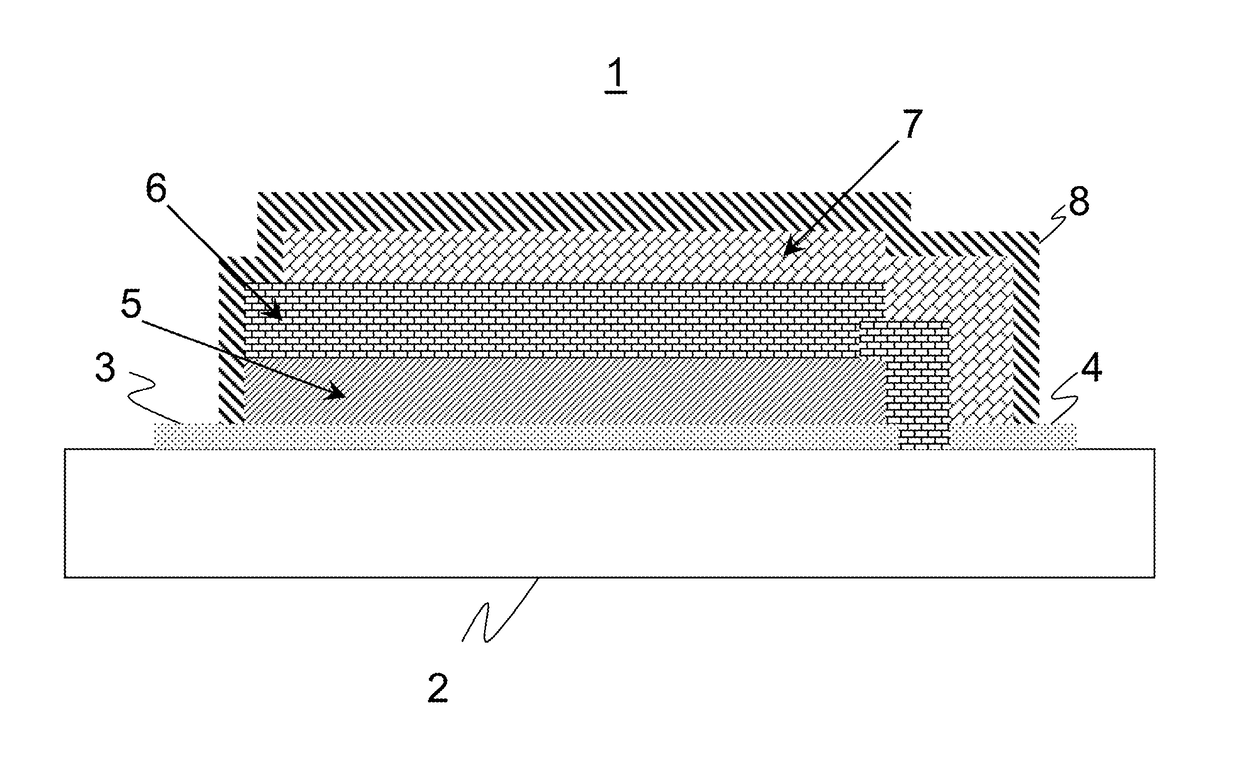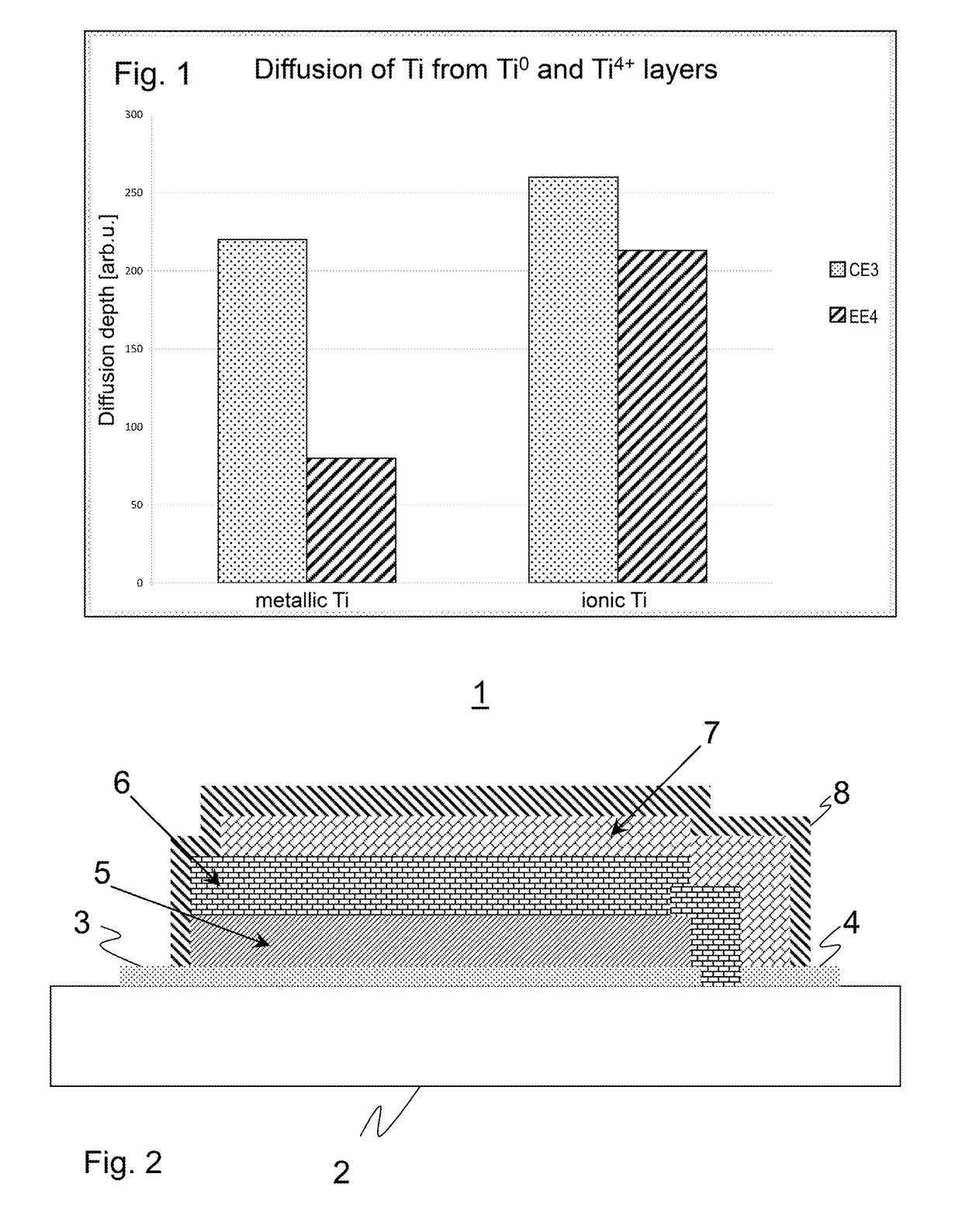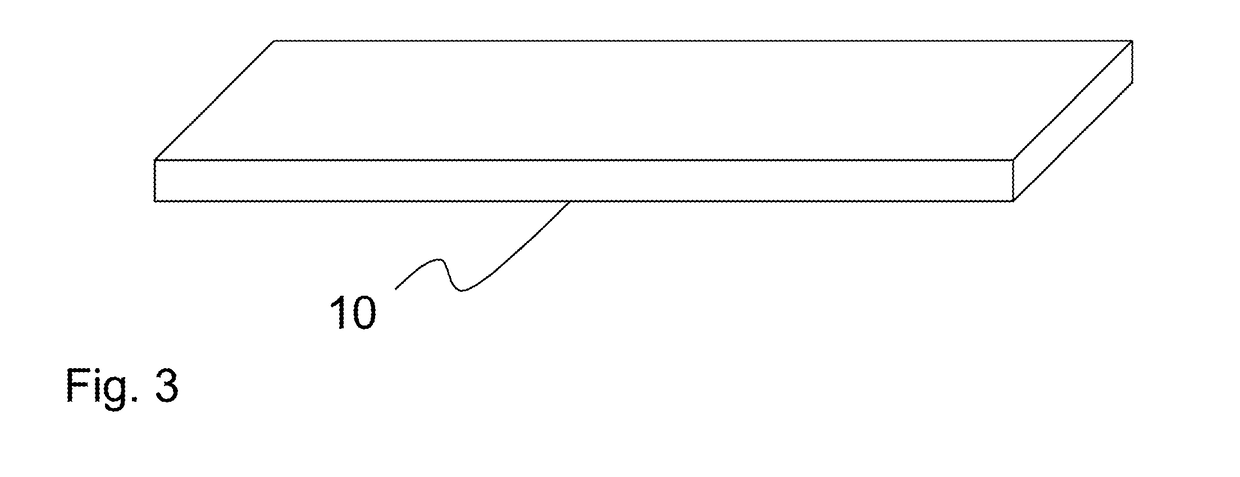Electrical storage system comprising a disc-shaped discrete element, discrete element, method for the production thereof, and use thereof
a technology of disc-shaped discrete elements and storage systems, which is applied in the direction of cell components, final product manufacturing, sustainable manufacturing/processing, etc., can solve the problems of affecting the production efficiency of the product, the use of substrate materials, and the inability to meet the requirements of the production process, so as to achieve the effect of avoiding production rejects, high uniform thickness distribution, and saving costs
- Summary
- Abstract
- Description
- Claims
- Application Information
AI Technical Summary
Benefits of technology
Problems solved by technology
Method used
Image
Examples
Embodiment Construction
[0108]FIG. 1 shows a diagram for illustrating the influence of the TiO2 content of the sheet-type discrete element on the diffusion of metallic titanium and ionic titanium. The penetration depth of titanium is shown in arbitrary units (arb.u.) in each case, at the left for metallic titanium, at the right for ionic titanium. The composition of the sheet-type discrete elements corresponds to Exemplary Embodiment 4 and to Comparative Example 3, respectively, of table 1. The two examples differ in that Comparative Example 3 does not contain TiO2, in contrast to Exemplary Embodiment 4. With regard to titanium diffusion, the penetration depth in the titanium-containing sheet-type discrete element is significantly reduced, for both the case of metallic exposure and for the ionic exposure to TiO2.
[0109]FIG. 2 schematically shows an electrical storage system 1 according to the present invention. It comprises a sheet-type discrete element 2 which is used as a substrate. A sequence of differen...
PUM
| Property | Measurement | Unit |
|---|---|---|
| diameter | aaaaa | aaaaa |
| thickness | aaaaa | aaaaa |
| thickness | aaaaa | aaaaa |
Abstract
Description
Claims
Application Information
 Login to View More
Login to View More - R&D
- Intellectual Property
- Life Sciences
- Materials
- Tech Scout
- Unparalleled Data Quality
- Higher Quality Content
- 60% Fewer Hallucinations
Browse by: Latest US Patents, China's latest patents, Technical Efficacy Thesaurus, Application Domain, Technology Topic, Popular Technical Reports.
© 2025 PatSnap. All rights reserved.Legal|Privacy policy|Modern Slavery Act Transparency Statement|Sitemap|About US| Contact US: help@patsnap.com



